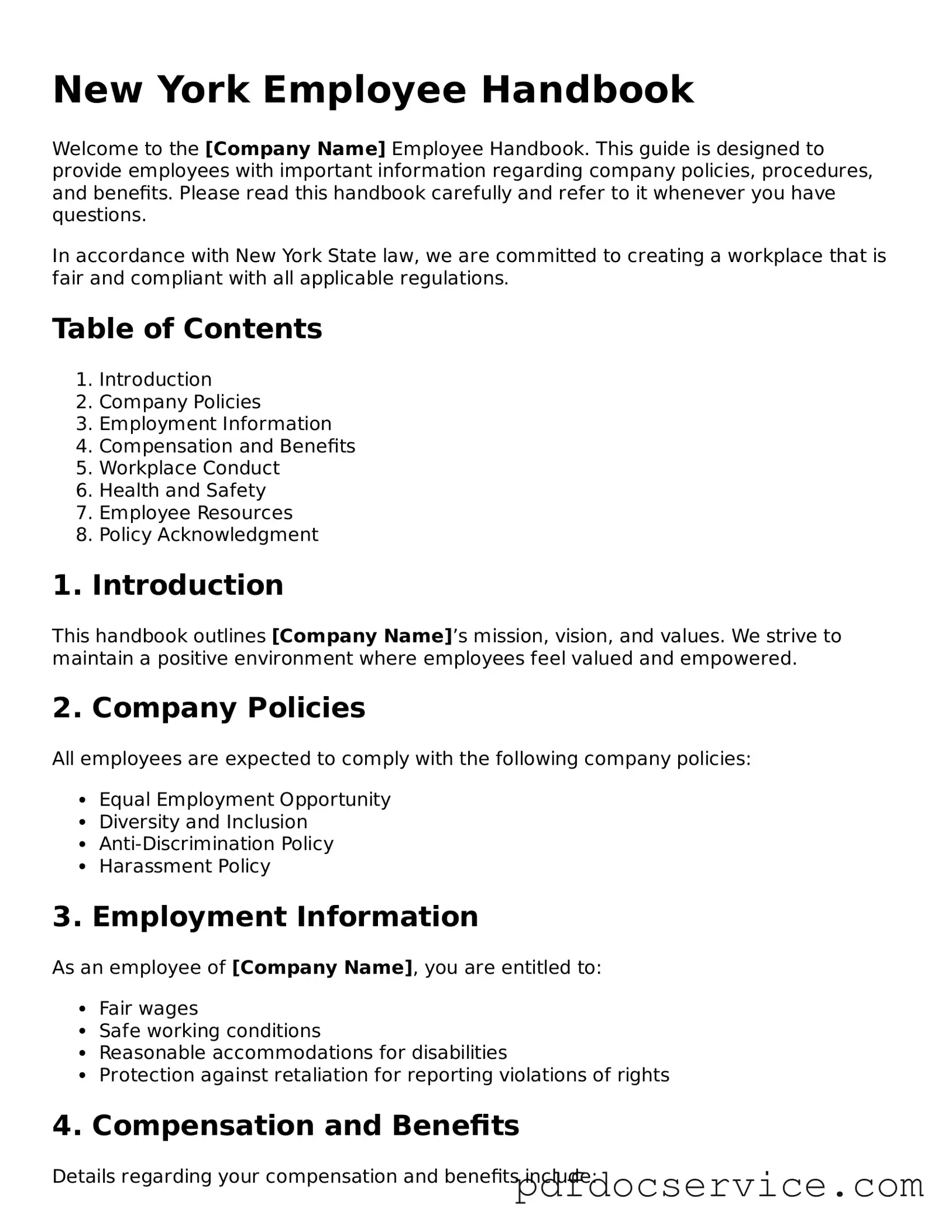The New York Employee Handbook form is a vital document that outlines a company's policies, procedures, and expectations for its employees. It serves as a guide to help employees understand their rights and responsibilities within the workplace. This handbook is particularly important in New York, where labor laws can be complex and vary significantly from other states.
Why is it important to have an Employee Handbook?
An Employee Handbook is crucial for several reasons:
-
It sets clear expectations for employee behavior and performance.
-
It helps to ensure compliance with state and federal labor laws.
-
It can protect the company from potential legal disputes by providing documented policies.
-
It fosters a positive workplace culture by communicating the company’s values and mission.
Who should receive a copy of the Employee Handbook?
Every employee should receive a copy of the Employee Handbook upon their hiring. Additionally, it is advisable to provide copies to new hires during orientation. Current employees should also have access to the handbook, especially if updates or changes are made. This ensures everyone is informed and aligned with the company’s policies.
How often should the Employee Handbook be updated?
Updating the Employee Handbook regularly is essential. At a minimum, it should be reviewed annually. However, updates may be necessary if there are changes in laws, regulations, or company policies. Keeping the handbook current helps to avoid confusion and ensures compliance with the latest legal standards.
What should be included in the Employee Handbook?
A comprehensive Employee Handbook should include, but is not limited to:
-
Company mission and values.
-
Employment policies, including hiring and termination procedures.
-
Compensation and benefits information.
-
Workplace conduct and disciplinary procedures.
-
Health and safety guidelines.
-
Leave policies, including sick leave and vacation.
-
Equal employment opportunity and anti-discrimination policies.
Can an Employee Handbook be legally binding?
While an Employee Handbook is not typically considered a legally binding contract, it can have legal implications. Courts may refer to the handbook when determining employment disputes. Therefore, it’s important that the handbook is clear, consistent, and accurately reflects company policies. Including a disclaimer stating that the handbook is not a contract can help mitigate misunderstandings.
What should I do if I have questions about the Employee Handbook?
If you have questions regarding the Employee Handbook, it’s best to reach out to your HR department or supervisor. They can provide clarification on specific policies or procedures. Additionally, employees are encouraged to ask questions to ensure they fully understand the contents of the handbook, as this promotes a transparent and informed workplace.
